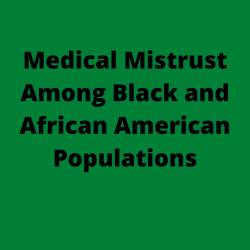Sarah Rogers's collections
HIV/AIDS Activism and Education Through Art
<p><strong>Overview:</strong></p>
<p dir="ltr">Art and visual media have played a large role in educating the public about the AIDS/HIV epidemic since the 1980’s. There was and still is a negative stigma associated with AIDS/HIV that discourages many individuals from turning to medical professionals for education and treatment of AIDS/HIV. This collection explores various forms of art and how they are used to both educate the public about HIV/AIDS and encourage activism. The project zero thinking routines included in the collection encourage students to analyze the art as well and think critically about the beliefs and feelings of all those within the system: patients, their friends and family, the general public and politicians.<br><br></p>
<p><strong>Questions for discussion throughout the lesson include:</strong></p>
<ul><li>Can you find beauty in this image/story?</li><li>Can you find truth in this image/story?</li><li>What is the story?</li><li>What is the untold story?</li><li>Compare two works of art, what is similar? What is different?</li><li>Why might this topic matter to me, the people around me, the world?</li><li>How does this person understand this system and their role within it?<br></li></ul>
<p><strong>Pacing/curriculum:</strong></p>
<p>This lesson was designed for a high school course that specifically covers healthcare with an emphasis on modern clinical medicine, including topics such as cultural sensitivity, medical ethics, and reproductive rights. It can also be used in courses covering life sciences, biology, civil rights, and American history.</p>
<p>The collection is designed to be used in one to seven 55-minute class periods depending on the number of sections each student is assigned to complete. The collection can be used in a remote or in-person learning environment. The teacher can lead the students through the collection or let the students move through the collection on their own. Each section contains a Project Zero Thinking Strategies to be used with the slides that follow. The sections include various forms of art including, gallery art, quilting, informational posters, political posters, event posters and fashion.</p>
<p>#civicdiscourse<br></p>
 Sarah Rogers
Sarah Rogers
61
Medical Mistrust Among Black and African American Populations
<p><strong></strong></p>
<p><strong>Overview: </strong></p>
<p>Medical professionals must be sensitive to different ideas and beliefs when working with patients from different backgrounds. They must also be familiar with the community’s history and previous experiences with the medical field. This collection explores the history of how the Black and African American communities have been treated by the medical community. After learning about this history, students will be able to apply their understanding and discuss how this history impacts the relationship between the Black and African American communities and medical professionals today. </p>
<p><strong>Questions for discussion throughout the lesson include:</strong></p>
<p>Why does medical mistrust among Black and African American populations matter to me, the people around me and/or the world?</p>
<p>How does the person understand the medical system and their role within it? What might the person’s emotional response be to the system and their position in it? What are this person’s values, priorities, or motivations regarding the system? How might these answers change depending on the person’s perspective (Black or African American community member, medical professional, other community member)?</p>
<p>What can I do to contribute to this topic in my inner circle, in my community and in the world?</p>
<p><strong>Pacing/curriculum: </strong></p>
<p>This lesson was designed for a high school course that specifically covers healthcare with an emphasis on modern clinical medicine, including topics such as cultural sensitivity, medical ethics, and reproductive rights. It can also be used in courses covering life sciences, biology, civil rights, and American history.</p>
<p>The collection is designed to be used in one or two 55-minute class periods and can be used in a remote or in-person learning environment. The teacher can lead the students through the collection or let the students move through the collection on their own. Students may also be broken into groups with each group reviewing one of the four subtopics and coming back to share with the entire class. </p>
<p> </p>
<p><br></p>
<p>#civicdiscourse</p>
 Sarah Rogers
Sarah Rogers
25


